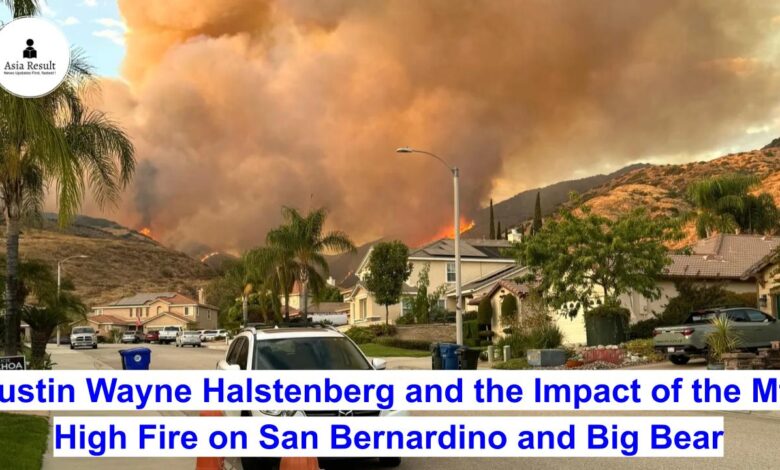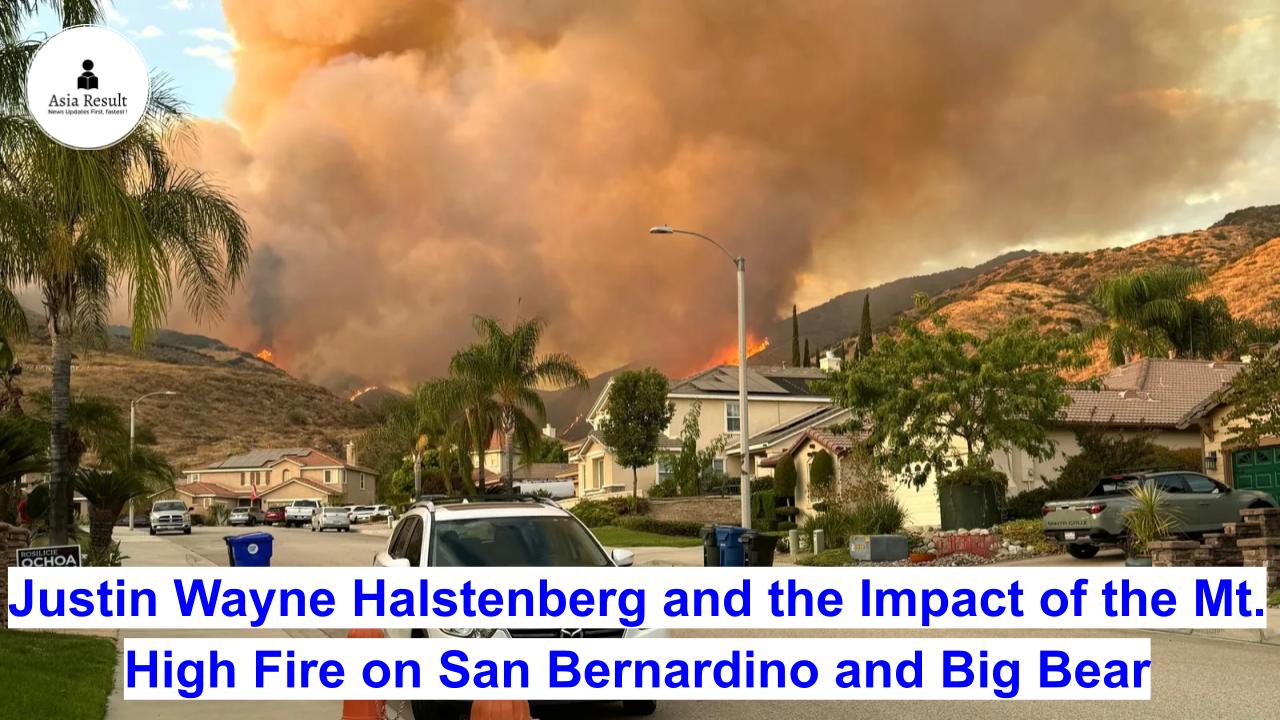Justin Wayne Halstenberg and the Impact of the Mt. High Fire on San Bernardino and Big Bear

Justin Wayne Halstenberg : The recent wildfires in San Bernardino have brought widespread concern and disruption to local communities, particularly in the Mt. High and Big Bear areas. As the fires continue to spread, many residents are facing evacuations, disruptions, and the uncertainty of not knowing what the next day will bring. In this article, we’ll explore the impact of these fires, delve into the community stories, and understand the broader implications, including how the San Bernardino School District is handling the situation.
Understanding the Mt. High Fire
The Mt. High Fire erupted amid dry conditions and high winds, quickly spreading across the forested regions of San Bernardino County. The fire, which started due to a combination of factors including dry brush and high temperatures, has been difficult to contain due to the rugged terrain and shifting winds. Firefighters have been working tirelessly to establish control lines, but the unpredictable nature of the fire has made their task incredibly challenging.
Impact on Big Bear and Surrounding Areas
Big Bear, a popular destination known for its picturesque lake and mountain activities, has been significantly affected by the Mt. High Fire. As flames crept closer to residential areas, many residents were ordered to evacuate, and local businesses had to shut down temporarily. The impact on tourism has also been profound, with potential long-term effects on the local economy.
Evacuation orders in Big Bear have led to a significant logistical challenge for emergency services. Community centers have been converted into evacuation shelters, and local organizations have been working around the clock to provide aid and comfort to displaced residents.
San Bernardino’s Response to the Fires
San Bernardino County’s emergency response has been swift, with fire departments, law enforcement, and volunteer organizations collaborating to manage the crisis. Firefighters from across the state have joined forces, using helicopters, fire retardant drops, and ground crews to combat the blaze. The local government has also set up command centers to coordinate efforts and keep the public informed through regular updates.
California Fire Map: A Tool for Tracking Wildfires
In times of crisis, staying informed is crucial. The California fire map is an invaluable tool that provides real-time information on the status of wildfires across the state. Residents can use this map to track fire perimeters, evacuation zones, and air quality indices. This digital tool has become a lifeline for many, offering critical updates that help residents make informed decisions about their safety.
Justin Wayne Halstenberg: Local Impact and Community Stories
Justin Wayne Halstenberg, a resident deeply affected by the Mt. High Fire, has become a voice for the community. His story reflects the broader challenges faced by many in San Bernardino. As a local business owner and active community member, Justin has witnessed firsthand the disruption caused by the fires. His efforts to organize community support and aid for those impacted highlight the resilience and solidarity that have come to define this crisis.
Effects on San Bernardino School District
The fires have also taken a toll on the San Bernardino School District. With several schools located in or near evacuation zones, the district has had to quickly adapt, implementing remote learning options and setting up communication lines to keep parents informed. Ensuring the safety of students and staff has been the top priority, and the district is closely monitoring air quality and fire proximity to decide on potential school closures.
Evacuation Procedures and Safety Tips
For those living in fire-prone areas, understanding evacuation procedures is essential. Authorities recommend keeping a “go bag” with essentials like important documents, medications, and emergency supplies. It’s also crucial to have a family emergency plan in place and to stay updated through official channels.
Safety tips during wildfires include keeping windows and doors closed to reduce smoke exposure, staying hydrated, and wearing N95 masks to protect from fine particles in the air. Always heed evacuation orders promptly, as delaying can put both you and first responders at greater risk.
Environmental Impact of the Fires
Beyond the immediate human impact, wildfires also have significant environmental consequences. The fires have devastated local wildlife habitats, forcing animals to flee and destroying vegetation that is crucial for ecosystem balance. The aftermath includes soil erosion, water contamination, and a long recovery period for burned forests.
Community Support and Resources
In the wake of these fires, various organizations have mobilized to offer support to those in need. From providing temporary shelter to distributing food and supplies, the community’s response has been overwhelmingly positive. Local non-profits, churches, and volunteer groups are all playing a role in helping residents navigate the recovery process.
Fire Prevention and Preparedness Tips
Preventing future fires is a collective responsibility. Simple actions like maintaining a defensible space around your home, properly disposing of yard waste, and adhering to local fire regulations can make a significant difference. Being prepared also means having an evacuation plan, staying informed through reliable sources, and participating in community fire safety programs.
Government and Non-Profit Efforts
Government agencies at the local, state, and federal levels are involved in both immediate firefighting efforts and long-term prevention strategies. These include controlled burns, forest management, and investment in firefighting technology. Non-profits are complementing these efforts by providing relief to affected families and advocating for stronger fire prevention policies.
Rebuilding After the Fires
Rebuilding is often the most daunting phase for those affected by wildfires. It involves not only reconstructing homes and infrastructure but also healing emotionally and psychologically. Community resilience programs, mental health resources, and financial assistance are critical components of the rebuilding process.
Looking Ahead: Future Fire Prevention Strategies
Looking forward, there is a growing emphasis on improving fire prevention strategies. This includes better land management practices, advanced early warning systems, and increased funding for firefighting resources. Innovations in technology, such as AI-driven fire prediction models and enhanced communication networks, offer promising tools for the future.
Conclusion
The fires in San Bernardino, Mt. High, and Big Bear serve as a stark reminder of the ongoing challenges posed by wildfires in California. As communities come together to face these threats, the importance of preparedness, resilience, and proactive measures cannot be overstated. By staying informed and engaged, residents can help ensure the safety and well-being of their families and neighbors.
FAQs
- What is the current status of the Mt. High Fire?
- The status of the Mt. High Fire can change rapidly; it’s best to check the latest updates on the California fire map or local news outlets for current information.
- How can I check the latest fire map updates?
- You can view the latest updates on the California fire map available on various official websites like Cal Fire or local government sites.
- What should I do if my area is under an evacuation order?
- If your area is under an evacuation order,




